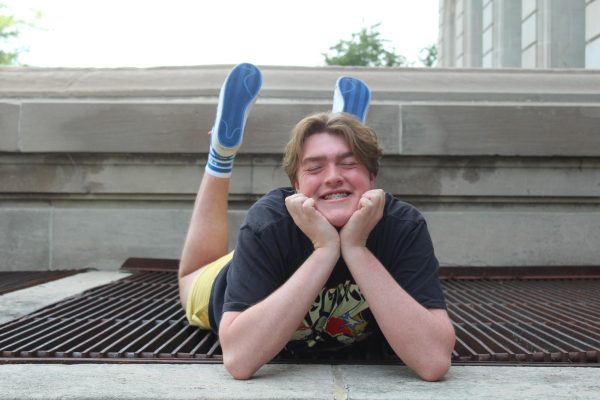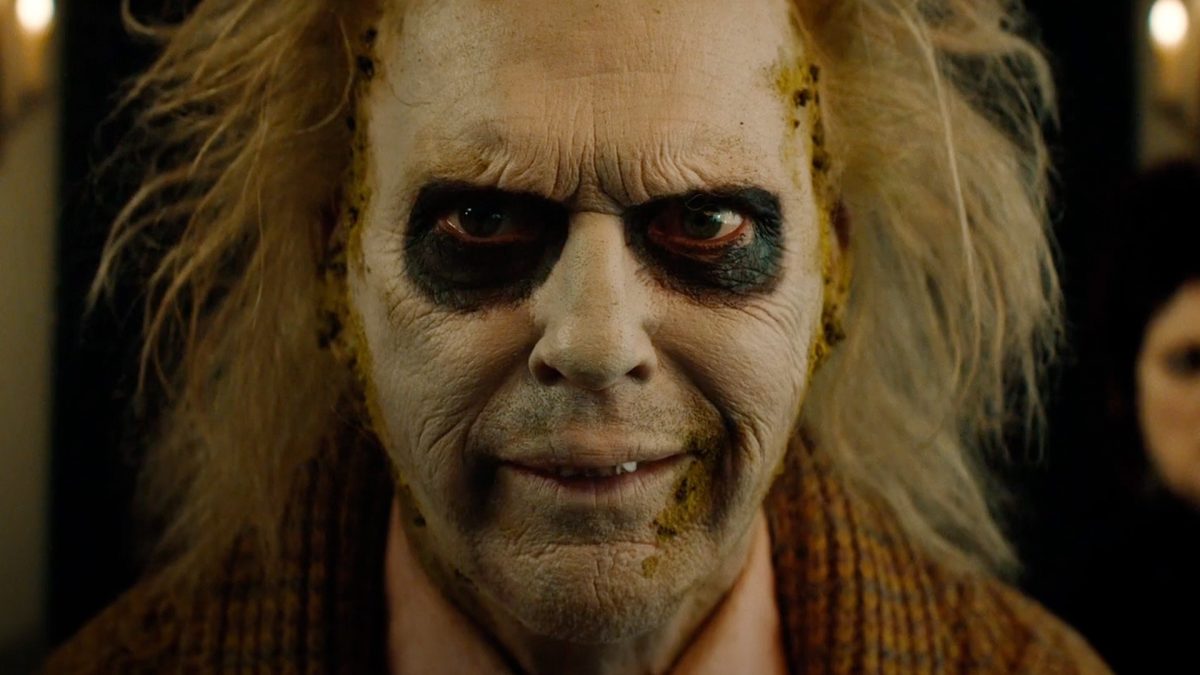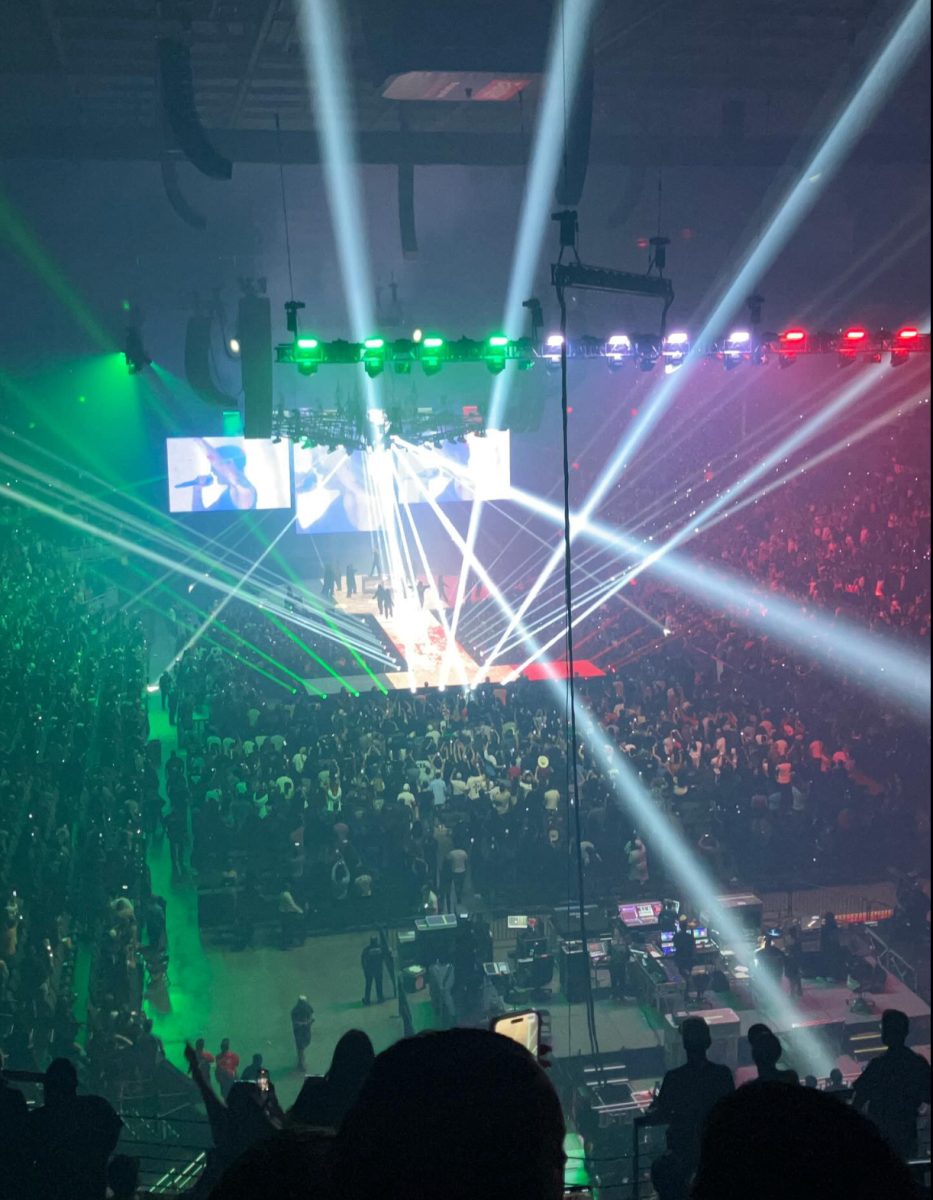Ribbon of baseball woven through American History, says Wilson
When talking to Scott Wilson – honors, Advanced Placement and International Baccalaureate US History teacher – his love for teaching is evident. But when in his classroom, it’s easy to spot his fascination with something else pertinent to America: baseball.
“[Baseball has] been huge. I played from the time I was five until I was 35. So, I played for 30 years,” Wilson said. “I played in a league called the MINK League, which is a really competitive summer league… That’s the Missouri, Iowa, Nebraska, Kansas league. And there were days when I would finish teaching at Central, and my buddies would pick me up on Dodge, and I’d throw all my equipment in there, and I’d get changed in the car, we’d drive down to somewhere in Iowa or Kansas for a game that night.”
Wilson even remarked that he played a summer with Pat Venditte, a former ambidextrous Major League Baseball pitcher, and the namesake of the Venditte rule, while he was a student at Central.
In his own words, he stopped playing the sport because it became harder to recover as he grew older. “Now even when I just think about throwing a baseball, my elbow and my shoulder just hurt,” he said. “But I’ve always really loved the game.”
A lifelong Royals fan, Wilson joined the Society for American Baseball Research (SABR) after he stopped playing. This gave him access to resources like articles, advanced statistics (hence the term “SABR-Metrics”) and many other fragments of baseball history. “I’ve always felt like if you really are into a sport, you should really know some of the history of it,” Wilson said.
While Wilson let his SABR membership lapse during COVID, he still finds joy in the history of the sport and intertwines themes of the sport into his courses.
Throughout American history, Wilson said that themes within the greater culture at large were always happening in the world of baseball. Things with seemingly small implications, like the incorporation of the radio into the country’s national pastime that led to its rise, or things with larger implications, like the integration of Black people into American society at large, all happened in baseball at the same time as the rest of the country. And, unlike other areas of American society, the baseball world was broadcasted and recorded on a large scale throughout its entire history.
“In 1950, all the Major League teams were kind of tucked up into the northeast corner of the United States, with St. Louis being the southernmost and the westernmost team, and they had two teams. [When] Americans [started] moving to the Sun Belt, well, that’s how we ended up with teams in California, and teams in Arizona, and Texas,” Wilson said.
“The ribbon of baseball is really woven through the history of the United States as well,” he said.
Martin Babicz, a professor at the University of Colorado Boulder, teaches a course and authored a book about baseball’s intertwinement with American history. Wilson and Babicz initially met through a mutual friend: “I have a friend who teaches history [at CU Boulder], and he was a childhood friend of Mr. Wilson. And my friend thought that Mr. Wilson and I had a lot in common. We both like baseball. We both teach history. We both like music. And so, he introduced us,” Babicz explained.
While Babicz is technically a colonial historian (his PhD is in American History), his true love was with baseball. “I always had this idea in my mind of teaching a course in baseball, and even writing a book about American history through baseball. And I shared the idea with a history professor here. And he started the class, America through Baseball,” Babicz said. “He signed off on letting me teach it. And after I taught it for a few years, I went back to him and said, ‘I’d like to do a book about it.’”
Babicz then co-wrote “National Pastime: U.S. History Through Baseball” with Thomas Zeiler, another professor at Boulder.
His class, which follows the book, is “broadly focused on American history,” but narrowly focused on baseball. “What I realized back in the 1980s, was that just about anything, anything that happens in American history since the 1830s, you could see it happening in baseball as well,” he said. “I really thought that was a great parallel.”
Babicz said one of the most interesting parallels between baseball and American history was the Progressive Era, with presidents Woodrow Wilson and Teddy Roosevelt, and its overlap with the creation of the American League. “Teddy Roosevelt was a trust buster. And the American League ended the National League’s monopoly of baseball,” Babicz said. “The progressives hated chaos and disorder, they wanted everything to be orderly. And baseball in the 1890s was very chaotic, with a lot of different problems. And the creation of the American League with Ban Johnson running that sort of created a new order to baseball and it created stability to such a degree that for 50 years from 1903 to 1952, baseball’s major league teams did not change. The same 50 teams were the major leagues from 1903 to 1952.”
During his life, Babicz said he’s seen the game and the country continue to play off each other’s parallels. “You look at things you don’t realize until a little bit of time has passed, how much what’s happening in baseball is reflecting what’s happening in the in American society,” he said.
Babicz, who also teaches a strictly American history course, said that the inclusion of this subject that people tend to care about increases people’s interest in his class. “I discovered a few times where I might ask the same question in my baseball class on an exam that I would ask [in] a pure American history [course],” he said. “And I’ve discovered that often the students in the baseball class do better on that same question than students in a regular history class.”
“Is it the baseball part that’s catching their attention and making them pay more attention and think deeper about history? I don’t know,” Babicz said. “But I do notice that students in the baseball class tend to do better than students who are not in the baseball class, even though that material is the exact same stuff in both classes.”
Your donation will support the student journalists of Omaha Central High School. Your contribution will allow us to purchase equipment and cover our annual website hosting costs.

Hi! My name is Charlie (he/him), and I'm a senior. This is my fourth (and final </3) year on staff, and I’m the Co-Editor-in-Chief. I was voted most...













